
One question many home cooks have pondered at least once is ‘should I use the shiny or the dull side of the aluminum foil? Have I been doing it wrong this whole time?’ Some think the shiny side reflects more heat, resulting in a crispier finish, while others assume the dull side is a better conductor, creating a more even cooking surface.
We’re here to solve this longstanding mystery and to also reassure you that you haven’t been making any grave aluminum foil-related mistakes all these years. According to cooking experts, there is no “correct” side of aluminum foil to use, they’re both equally effective at heating your food, so you're free to choose whatever side you prefer.
But if there’s no trick to it, then why does aluminum foil have a shiny side and a dull side, to begin with? Huffington Post checked with experts a Reynold's Kitchen, and the answer is - it has to do with the manufacturing process. Tinfoil is made in a process called milling, during which heat and tension are applied to stretch and shape the foil.

Reynold’s kitchen provided a detailed explanation on their website:
The foil is ‘milled’ in layers during production. Milling is a process whereby heat and tension are applied to stretch the foil to the desired thickness. We mill two layers in contact with each other at the same time, because if we didn’t, the foil would break during the milling process. Where the foil is in contact with another layer, that’s the ‘dull’ side. The ‘shiny’ side is the side milled without being in contact with another sheet of metal. The performance of the foil is the same, whichever side you use.
If you use non-stick foil, however, there actually is a difference between the two sides, as the non-stick coating is only applied to one side. If that is the product you’re using, then you must make sure that the food only makes contact with the dull side. In most cases, it is imprinted with a “non-stick side” so it’s easy to avoid confusion. And that’s all you need to know. Now you’re prepared for an easy-breezy holiday cooking session.
If you found this article helpful, share it with friends and family
 27:48
27:48
20 Simple and Delicious 3 Ingredient Recipes
This video offers you no less than 20 easy and delicious recipes requiring only 3 ingredients each!
 13:29
13:29
How to Turn Simple Items Into the Kitchen Gadgets You Need
In this video, you will learn how to repurpose 13 kitchenware staples everyone has in their cupboards into much-needed gadgets!
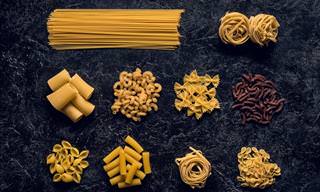
This is How to Cook Perfect Pasta Every Time!
If you struggle with cooking pasta properly, and want to learn how to cook the perfect pasta, check out the these helpful tips!

Drilling Holes In Your Bin Can Make Your Life Much Easier!
Drilling holes in your trash can? Yes! Learn two easy tricks that will make taking out the trash much easier
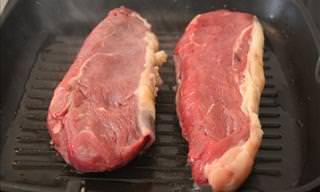
These Tips Will Make Any Meat Taste Like an Expensive Cut
You don't have to buy expensive cuts of meat to get a juicy steak. Here are three tips that'll make a cheap cut taste like an expensive cut.

Grill a Flawless Chicken Every time With These Tips
A full troubleshooting guide for your next grilled chicken. No more frustration, but a lot of preparation!

Get Wax Out of Your Clothes Easily with This Guide
If you've got wax stuck on your fabrics, this is the best way to go about removing it.

How to De-Ice Your Freezer and 11 Other Practical Tips!
How to find something you lost, how to find pipes under your floor and more handy shortcuts everyone should know.
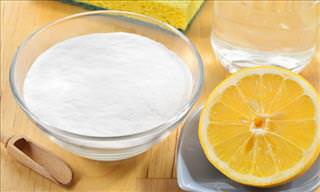
Keep Your Clothes Whiter with These 7 Tips
With these handy tips, you can make your whites last longer using simple household ingredients.

Catch an Attacker Off-Guard with These Self Defense Moves
Learn a few simple moves and catch your attacker off guard with this simple guide.

NEVER Do These 7 Things When Using a Power Strip
These are 7 safety tips you should always follow when using a power strip to avoid disaster
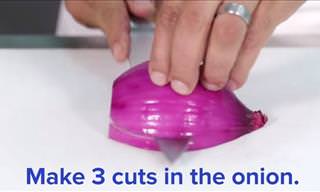 1:45
1:45
Chef's Tips: Chop Your Veggies Quickly Like a Pro
If you want to save yourself some time in the kitchen, follow these fantastic veggie chopping tips from the experts!

People Really Have No Idea What These English Words Mean!
A lot of people think they know how to use English words correctly, but they really don't! Here are 21 most misused words in the English language
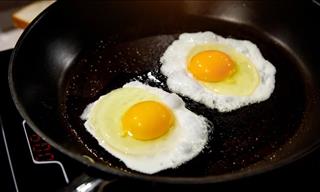 12:05
12:05
DO NOT Make These Mistakes When Frying an Egg
For a quick lesson in frying an egg, just watch this vidoe guide.

Learn to Solve 7 Common Appliance Problems All By Yourself
The washing machine, the fridge, the dishwasher - these are the home appliances that make our lives that much easier. Here are 7 common problems we have with our home appliances that we can easily fix ourselves.

Don’t Let Broken Zippers Bother You Again. I’ve Found a Fix!
Don’t throw away your favorite pair of pants because of a broken zipper. Grab and needle and thread and try this easy fix.

Guide: The Alternative Uses of 21 Common Food Products
This guide will give you the useful tips and helpful information you need to find alternative uses for most of your common food products. You'll be amazed at the surprising uses for some of these common food items.

Baby Oil Can Do Things You Never Even Considered!
Baby oil is usually used to keep your baby's skin soft, but in the next article, you'll get ideas for six more effective and surprising ways to use it.
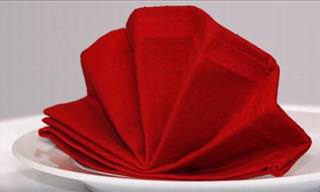
Spruce Up Your Dinner Table With These Napkin Techniques
Holidays are always a time of cheer. Spruce up your dining table with these 8 easy-to-try napkin techniques.
 6:11
6:11
There's a Secret Trick to Understanding Chinese...
This brilliant lecture will teach you the basics of Chinese

This Special Kind of Bread is Both Beautiful and Delicious
Tired of regular bread? How about surprising everyone with this beautiful and delicious "Watermelon Bread"? It's so easy to make!
 17:21
17:21
Here’s How Men Can Preserve Their Muscle Mass As They Age
Don't feel powerless against the loss of muscle mass that comes with aging - there are steps you can take to counteract it.

Know the Signs: The Complete Guide to Body Language!
You can learn a lot about a person’s intent by reading his body language, so find out just what that wink meant with this helpful guide.
 4:08
4:08
10 Terrific Life Hacks For the Winter Days Ahead
This video will show you some fantastic, yet simple, tips and tricks for this winter.

Warning: Don't Put These in the Washer or Dryer!
The washing machine and the dryer are two very efficient inventions that help us a lot - but the following 9 items are best kept away from them.

Clean the Things You Thought Were Impossible Easily
Thought you couldn't clean these items easily? This guide will help.
 8:40
8:40
How to Beat Knee Pain While Going Up and Down the Stairs
Knee hurts while climbing stairs? These tips might just help.

12 Unusual DIY “Hacks” People Used to Improve Their Lives
Take a look at some weird and unusual "inventions" made by people to solve their everyday problems.
 4:47
4:47
WATCH: 10 Amazing Life-Hacks You Wish You Knew Years Ago
If there were only 10 life-hacks you needed to learn, these would be them.

20 Unexpected Things You Can Plant in February
You’d be surprised at just how many plants you can get planted in February!

Alka Seltzer Makes a Surprisingly Helpful Cleaning Tool
Read on to find out how you can clean with this medicine cabinet staple.

Dog Can't Stay Alone? 5 Tips to Help Resolve Their Anxiety
When your dog shows anxiety when left alone, here are some tips to help you deal with the problem.
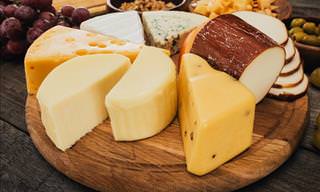
When Out Shopping, Avoid These 8 Generic Foods!
Generic foods are becoming more and more popular, but are they always a bargain? Here are 8 foods you should never buy generic.

Guide: How We Use Different Acids for Skin Treatments
Understanding how these acids work and their specific benefits will empower you to make informed decisions about your skincare routine.
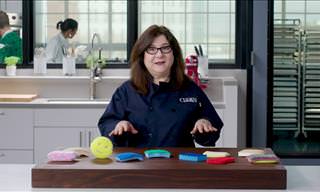 5:30
5:30
How to Choose the Best Kitchen Sponge for Your Home
What things should you consider when choosing the best kitchen sponge for your home? This video explains...

Lemons in the Oven? Read This Article to Find Out Why
Sick of mosquitoes and flies visiting your house? This surprising method will help you get rid of them effortlessly using lemons and an oven!

Hydrators vs. Moisturizers: Who Should Use What?
This article would like to provide clarity on the various types of moisturizers and help you understand what your skin truly requires.

These Fun Games Will Help Boost Your Memory
Seniors will benefit greatly by playing these memory-enhancing games. Oh, and they are fun!

8 Running Mistakes Most of Us Make
Just because you think you know how to run doesn’t mean that you’re doing it correctly – or effectively. Here are 8 mistakes people make when running.
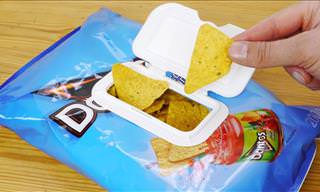 3:04
3:04
A Clever Trick For Keeping Your Favorite Snacks Fresh
This video will show you a simple trick that will keep your very perishable snacks fresh.
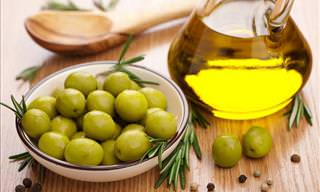
Fake Olive Oil: Here's How You Can Spot It!
If you want to know whether the olive oil you have bought is real or an imposter, here's how you can tell!

Make These Baby Products Naturally at Home!
To help you create your own natural remedies for your little one, we suggest trying out the following homemade "recipes".
 4:56
4:56
I Never Knew Scarves Could Be Tied in This Many Ways!
25 creative ways to tie a scarf in less than 5 minutes

WD-40: Here Are 12 Fantastic Uses You Never Thought Of
This is why you always need to keep a can of WD-40 on your property!

Hate Cough Syrup? This Home Remedy Works Even Better!
This natural home remedy for a bad cough is just as effective as cough syrup!

These Body Language Tricks Will Make You Seem Confident
Use These body language tricks to help you appear more confident in a social gathering.
 5:03
5:03
24 Simple But Genius Hanger Tricks to Use at Home!
Find out the many wonderful and useful tricks you can use a regular old hanger for!


